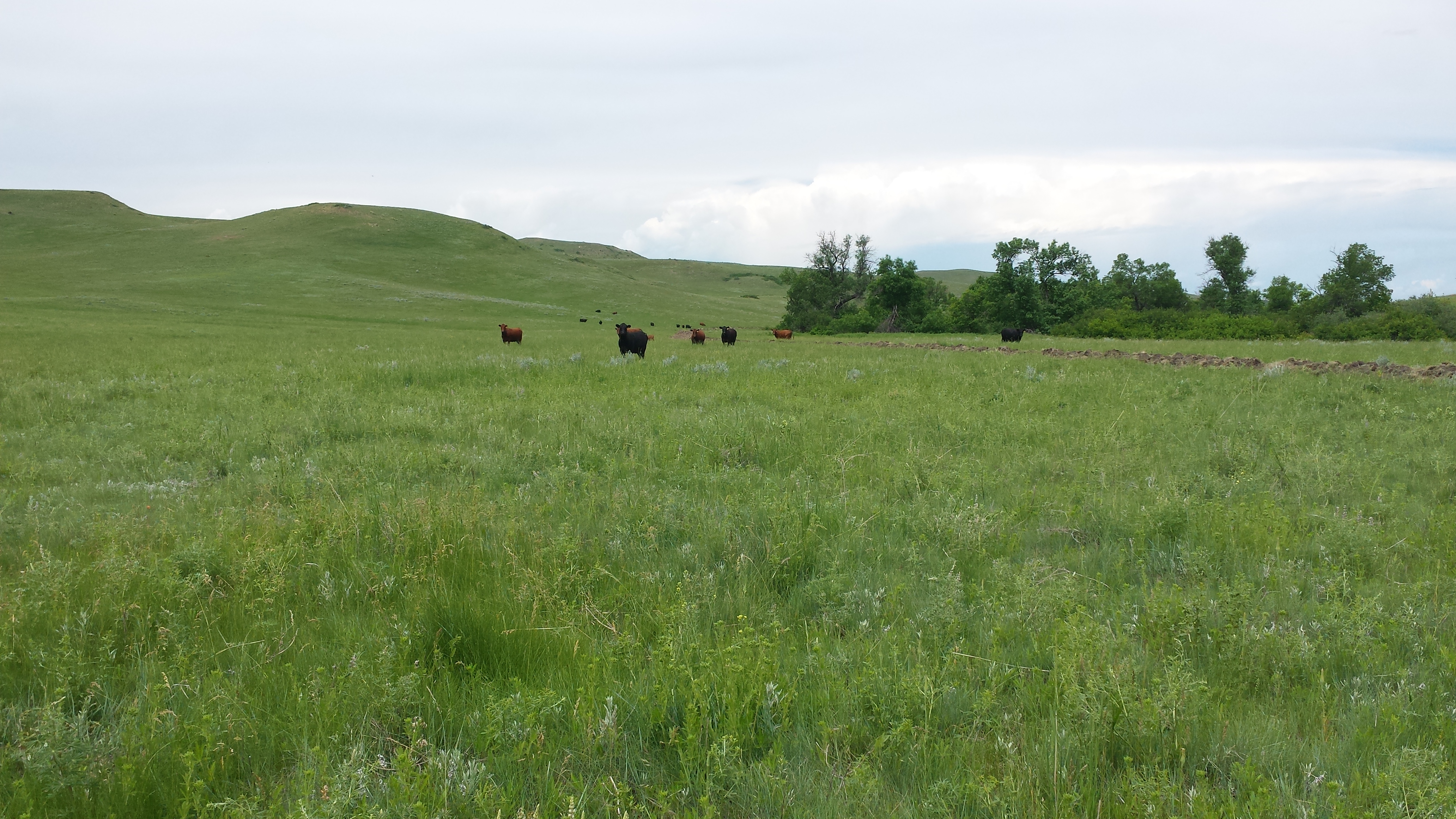
The Padlock Ranch utilizes an intensive grazing program. Photo Credit: Kaily Patterson
As you drive past the gate to the headquarters of the Padlock Ranch, you take in the ranch’s picturesque and unique setting, with the Tongue River flowing behind the historic buildings, and the Big Horn Mountains peaking toward the sky in the back-ground.
Luckily, this view is here to stay. In 2005 and 2006, the Scott family donated a series of conservation easements to the Wyoming Stock Growers Land Trust, ensuring this key portion of the ranch would never be broken up and subdivided. The entire operation, which reaches from Dayton, Wyoming to Hardin, Montana, was put together by Homer and Mildred Scott in the 1940’s.
Today, the ranch is still owned by several generations of the Scott family and is managed by Padlock’s CEO and President, Trey Patterson. The ranch has developed into a diversified cow-calf, farm, and feedlot operation.
I sat down with Patterson last summer to talk about the Padlock and how conservation easements have supported their mission and values, which includes financial excellence, employing exceptional people, natural resource sustainability, being a positive member of the community, and standing as an emblem for the Scott family.
Patterson spoke about why ranching under that set of values is important to the Scott family and to him, “I think it really is a culmination of those purposes which is beyond profitability. It’s this legacy of owning the ranch and being proud of it and being proud of the land, and being proud of the natural resources. Knowing that we are contributing to the environment and the community, to the agricultural industry, and that we are making a difference. We want to be excellent at what we do so it’s that constant drive to be better in all of those areas.”

The ranch builds management practices from their core values. Photo Credit: Kaily Patterson.
The operation is a prime example of a successful and self-sustaining marriage between conservation, farming, and ranching. Water and stream bank improvements have created healthier ecosystems for wildlife and the community. Intensive grazing plans and the planting of a cover crop for habitat are supporting both livestock and upland birds, and cattle are fed out on silage, produced from the ranch.
Patterson believes the future of agriculture depends on producers that promote what they do. People care about sustainability and most producers have a wonderful story to tell. One that is full of pride for the animals they raise, the lifestyle they live, and the land that they steward. Conservation through agriculture plays a key role in the story that the Padlock tells. Patterson spoke to this point, “You do not have to decide one morning that I am going to be a for-profit ranch, or I am going to be a conservation ranch, those two things need to be going on simultaneously and I think we embrace that.”

Strong conservation practices are a key aspect of how the ranch operates. Photo Credit: Kaily Patterson
As we walked next to the river and Patterson showed me different areas where the ranch had made stream bank improvements, it became ever more apparent, the importance of conservation as tool, one that can help connect producers to the public, one that can help to sustain ranching as a lifestyle, and one that the Padlock Ranch embodies.
A special thanks to the Scott family for being wonderful supporters of ag-land conservation, and to Trey Patterson for taking the time to speak with us.

